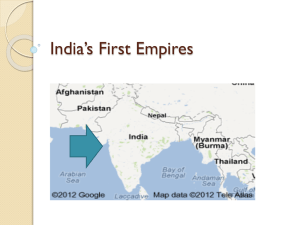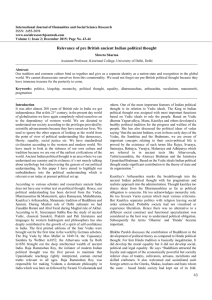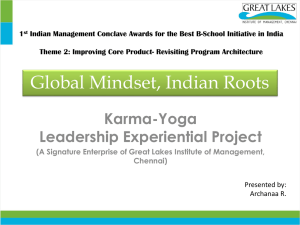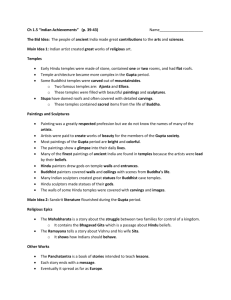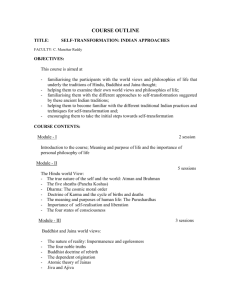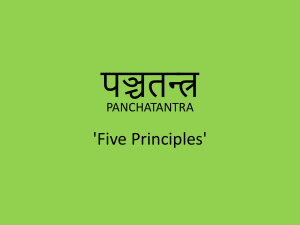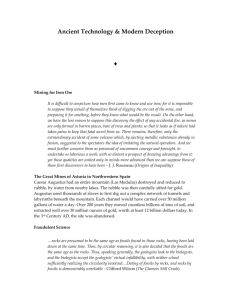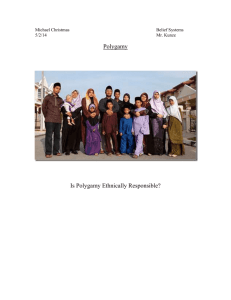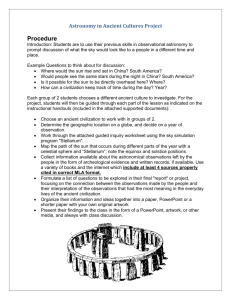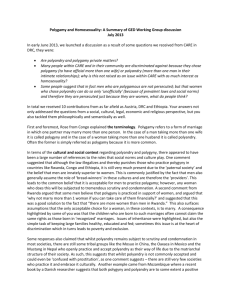Chapter 3: Ancient Indian Civilizations
advertisement
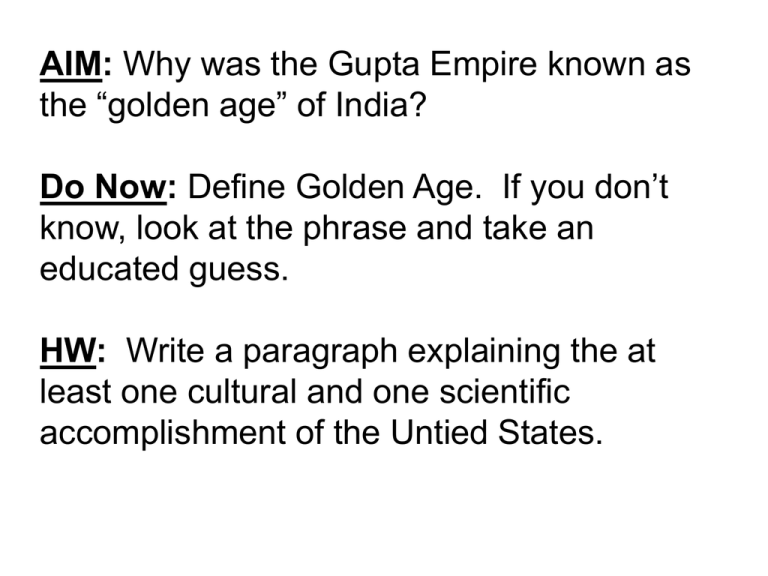
AIM: Why was the Gupta Empire known as the “golden age” of India? Do Now: Define Golden Age. If you don’t know, look at the phrase and take an educated guess. HW: Write a paragraph explaining the at least one cultural and one scientific accomplishment of the Untied States. C3.5: Ancient Indian Life and Culture The Story Continues “It is a day of festival. . . . the streets are broad rivers of people, folk of every race, buying and selling in the marketplace or singing to the music of wandering minstrels.” This account recalls a day of celebration during the Gupta Empire, an era in which Indian culture and achievements flourished. I. Economy and Society While the highest classes in northern India enjoyed luxury, most people barely survived I. Economy and Society The rajas drew wealth from the farmers who worked the land and claimed one-fourth of each harvest I. Economy and Society In southern India many lived by trading, sending luxury goods to the Far East, SW Asia, Africa, and Europe I. Economy and Society Hindu women had few rights, were required to obey male relatives, and could not own property or study sacred writings I. Economy and Society Men could have more than one wife and polygyny became widespread Polygamy and polyandry were prevalent In ancient India, but it is doubtful whether they were ever popular in the public opinion. It was practiced mostly by the warrior castes and rich merchants. Many Hindu gods are also depicted as polygamous, with two or more wives. Present day Hindus consider both polygamy and polyandry primitive and archaic, remnants of an old society that still haunt the lives of a few unfortunate victims. In India Hindus acknowledge polygamy as both illegal and immoral. I. Economy and Society In a practice called suttee, widows threw themselves on their husbands’ funeral pyres Sati (or Suttee) is a rare Indian practice in which a widow sacrifices her life by throwing herself onto her deceased husband’s funeral pyre. It is not directly derived from or connected to Hinduism, although spiritual beliefs play a large part in its traditional observation II. Cultural Achievements The stories of the Panchatantra, or “Five Books,” were animal fables intended to instruct the sons of the royalty One of India's most influential contributions to world literature, the Panchatantra consists of five books of animal fables and magic tales (some 87 stories in all) that were compiled between the third and fifth centuries AD. It is believed that even then the stories were already ancient. The tales' self-proclaimed purpose is to educate the sons of royalty. II. Cultural Achievements The Panchatantra has been translated into more languages than any other book except the Bible II. Cultural Achievements Plays were often performed outside and contained tragic scenes, but ended happily A. Art and Architecture The only paintings that survive are murals in caves depicting the Buddha and his followers The Ajanta Caves. Ancient Paintings of Buddhist India A. Art and Architecture Architects designed and built great Hindu temples and Asoka built thousands of Buddhist stupas B. Education Education was only for higher caste children and they studied the Vedas, astronomy, mathematics, warfare, and government The ancient Gurukul system of education where the guru imparts knowledge to the disciples B. Education Nalanda was a Buddhist university where thousands of students attended for free C. Mathematics and Astronomy Mathematicians understood the concepts of abstract and negative numbers, zero, and infinity C. Mathematics and Astronomy Aryabhata (late AD 400’s) was one of the first to use algebra and to solve quadratic equations C. Mathematics and Astronomy Indian astronomers identified seven planets, understood the earth’s rotation, and predicted eclipses D. Medicine Indian rulers built free hospitals for the people D. Medicine Indian physicians understood the importance of the spinal cord, could set bones and performed plastic surgery D. Medicine Physicians practiced cleanliness before operations and disinfected wounds, a procedure not practiced in Western medicine until recent times D. Medicine Physicians developed inoculation - infecting a person with a mild form of a disease to prevent a more serious form D. Medicine They successfully inoculated people against smallpox, something not accomplished in the West until the 1700s





